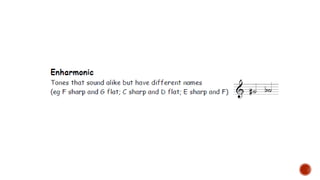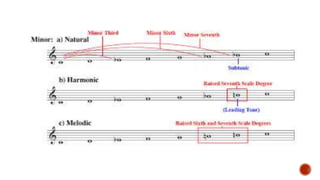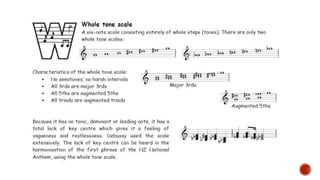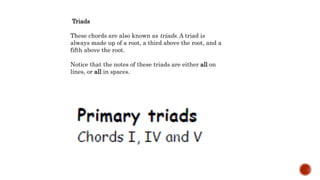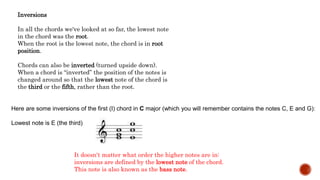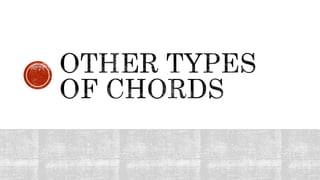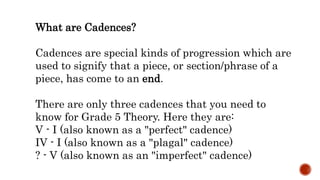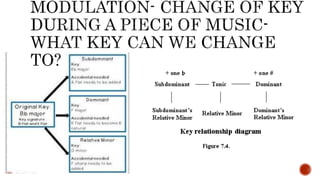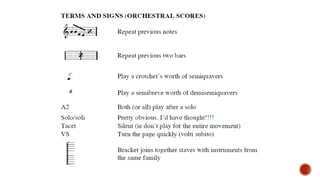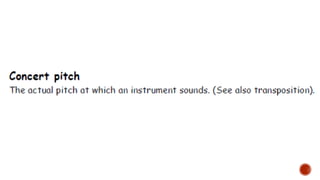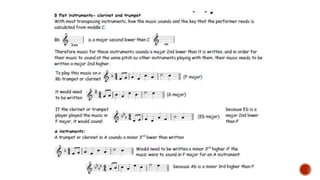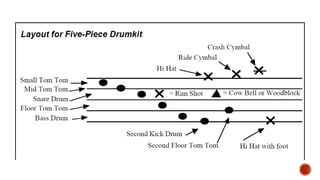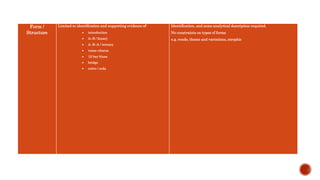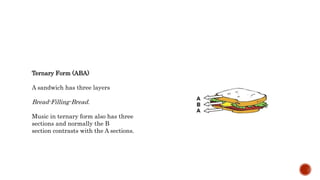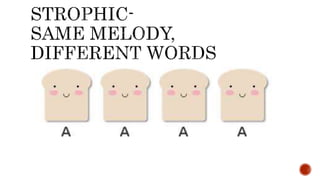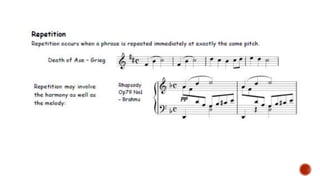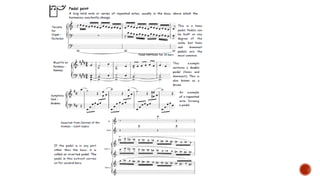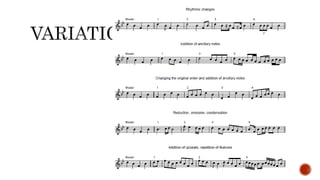The document provides information about music theory concepts including notation, rhythm, pitch, harmony, instrumentation, and musical forms and structures. It covers these concepts across two levels, with level 2 building upon level 1 by expanding the topics to include more advanced elements such as a wider range of time signatures, keys, chords, and transposition. The purpose is to outline the cumulative knowledge expected at each level for assessment in music theory.

















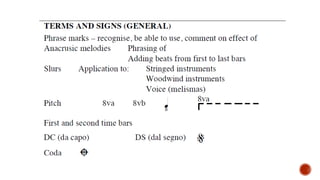

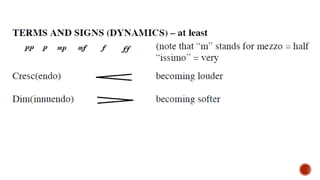







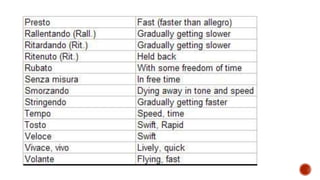





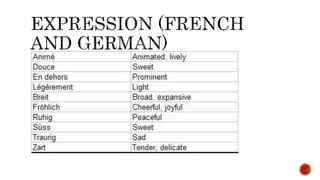
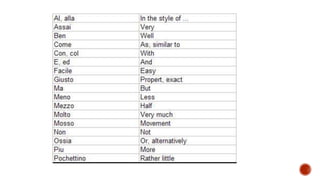


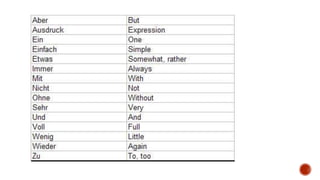
![Rhythm / Metre Limited to 2/4, 3/4, 4/4 and 6/8 [including C] Limited to “commonly used” simple, compound
and irregular time” [including ₵, and 5/4, 5/8, 7/8]
above time signatures –
identification and understanding of
rhythmic groupings and
classifications: simple/compound,
duple/triple/quadruple
as for L1, but including all time
signatures above
durations – notes, rests, (to
semiquaver), ties
description of rhythmic feel (e.g.
syncopation, swing)
as for level 1 but including
duplets/triplets/quintuplets,
anacrusis](https://image.slidesharecdn.com/level2musictheory-161129042048/85/Level-2-music-theory-39-320.jpg)
![Pitch / Tonality Limited to major and minor keys, up to three sharps
and three flats
Limited to major and minor keys, of up to four sharps
and four flats [no modes]
clefs – treble, bass, alto C-clef, percussion, and “vocal
tenor” (i.e. treble-octave)
as for L1, plus tenor C-clef, guitar TAB
key signatures and scales– recognition of major and
minor keys (harmonic and melodic), plus addition of
Blue notes
key signatures and scales- as for L1 plus natural
minor, and chromatic
key relationships (scale degrees) – tonic, subdominant,
dominant, relative major and minor
pitch names: tonic↔leading note
as for L1, plus tonic minor and supertonic
intervals – recognition of major, minor and perfect
intervals within an octave; lower note can only be the
tonic of one of the permitted major keys (i.e B-flat, F,
C, G, or D)
as for L1, plus augmented 4th/diminished 5th; same
limitation on lower note (but range of possibilities is
greater)
transposition – upwards only, sounding
pitch → written pitch only, limited to instruments in
B-flat and F also instruments transposing 8ve
transposition upwards or downwards, sounding
pitch ↔ written pitch, limited to instruments in B-
flat, E-flat, and F,
transcription – from treble clef ↔ bass clef, from alto
clef↔ other clefs, open ↔ closed score, written
pitch → sounding pitch (i.e. vocal tenor, double bass,
piccolo)
as for L1, plus from tenor clef↔ other clefs, written
pitch → sounding pitch (guitar/bass guitar)](https://image.slidesharecdn.com/level2musictheory-161129042048/85/Level-2-music-theory-40-320.jpg)
![Harmony Limited to chords I, IV, V, V7, and VI, in major and
minor keys, in root position only
Limited to chords I, Isus4, II, IV, V, V7,Vsus4 and VI,
in major and minor keys, in root, first, and second
inversion
chords – identification of individual chords using
Roman numerals and jazz / rock notation
as for L1, with a wider range of chords and inversions
chord progressions – identification of cadences (perfect,
plagal, imperfect I-V and IV-V only, interrupted)
add imperfect cadence II-V, and no restriction on
inversions
chords – notation of individual chords chord progressions – notation of cadences in root
position (perfect [V–I only, no V7], plagal, imperfect [I–
V only]); no interrupted cadence
modulation – identification of modulation (via perfect
cadence) to related keys (subdominant, dominant,
relative major and minor)
as for L1, plus tonic minor](https://image.slidesharecdn.com/level2musictheory-161129042048/85/Level-2-music-theory-41-320.jpg)

